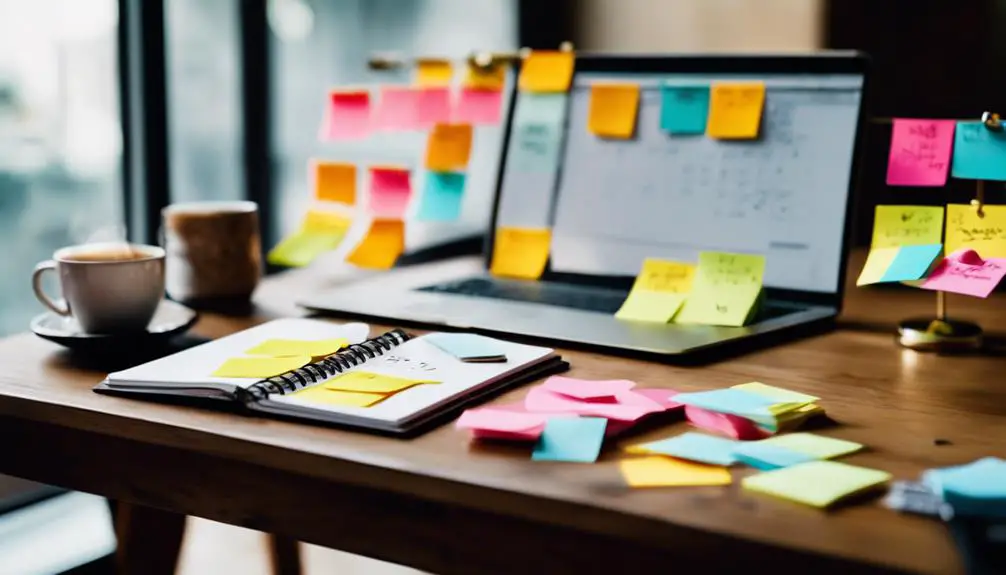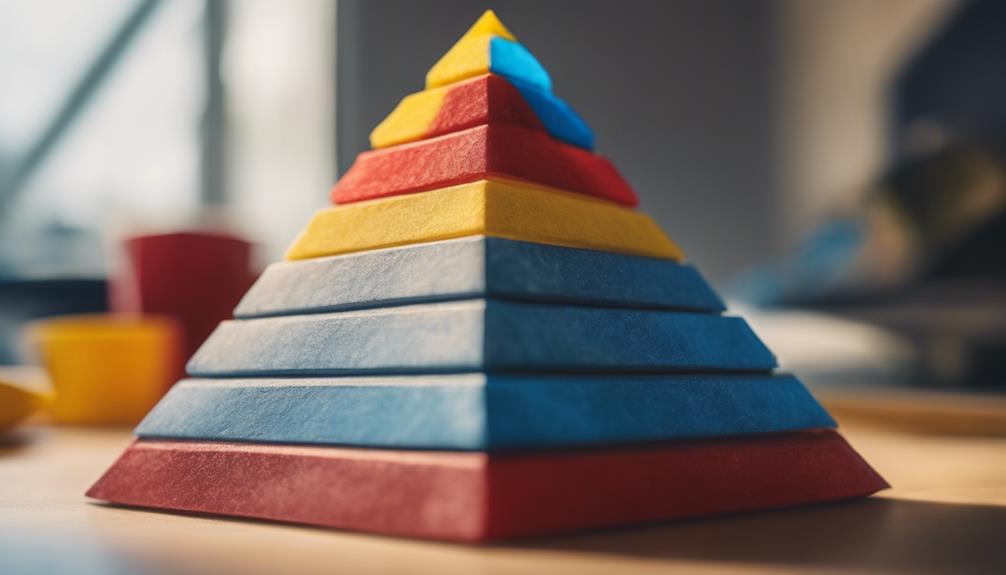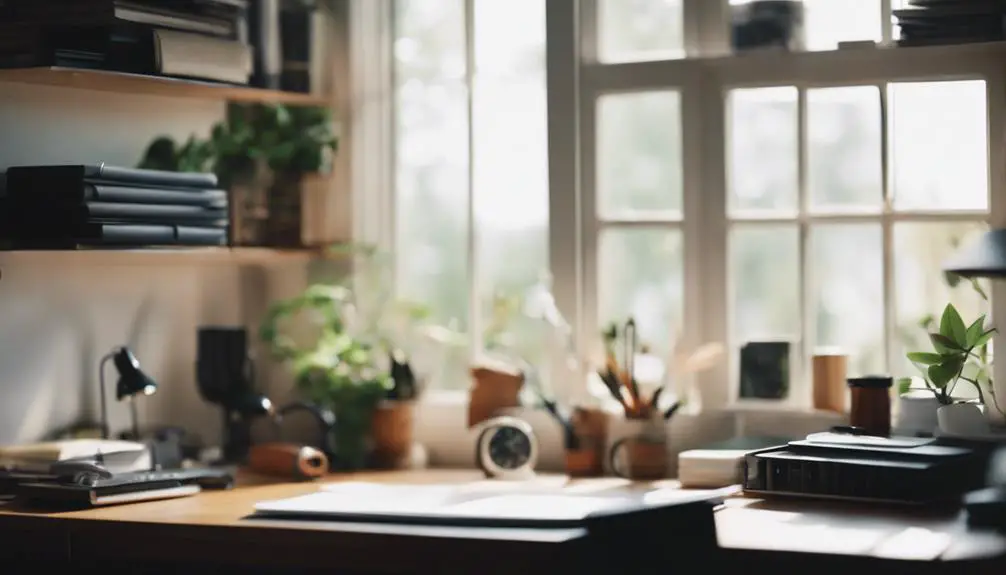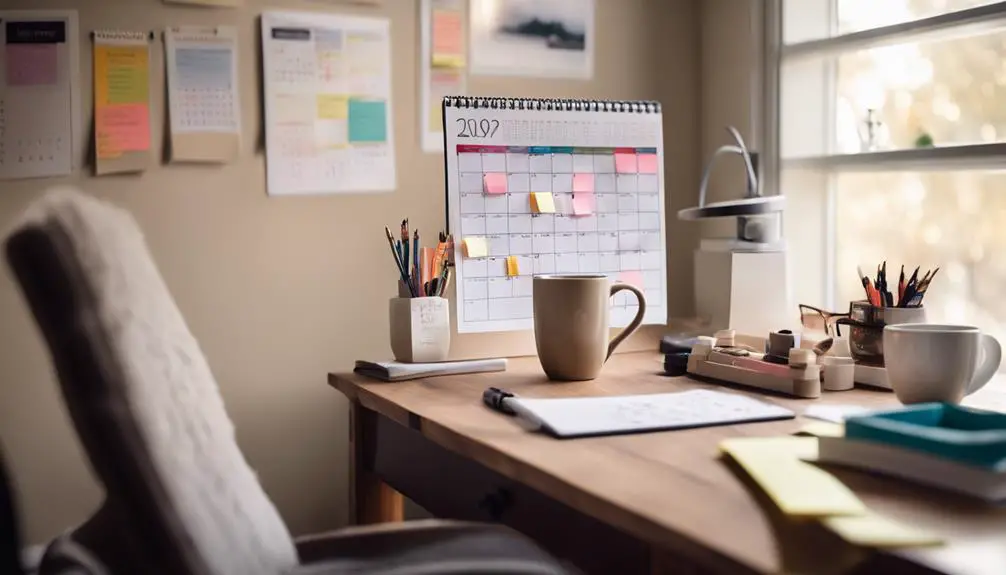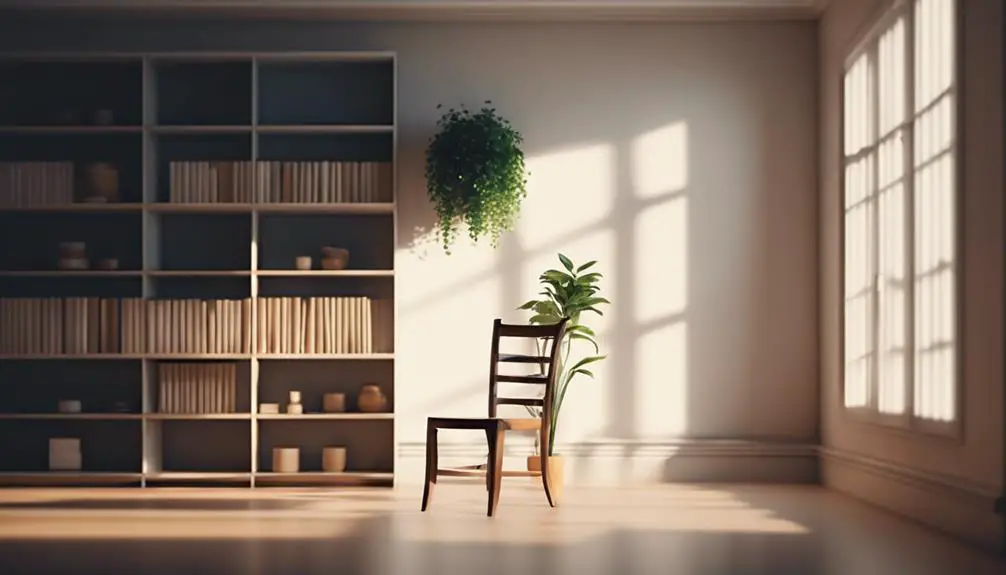Life can often feel chaotic due to both physical and mental clutter. Embracing extreme minimalism can lead to greater clarity by focusing on the removal of distractions that burden you. This lifestyle encourages intentional living, where experiences take precedence over material possessions, ultimately helping to lower stress levels and foster a more concentrated mindset.
Adopting this approach can significantly enhance your mental health, revealing insights that may transform your daily life in unexpected ways.
For instance, consider decluttering your living space. Start with one area, such as your bedroom or workspace. Remove items that you no longer use or that do not bring you joy. This practice not only clears physical space but also creates a more serene mental environment.
Another effective strategy is to limit digital distractions. Unsubscribe from unnecessary emails or delete apps that don’t contribute positively to your life. Such actions can free up mental bandwidth, allowing you to focus on what truly matters.
Incorporating mindfulness practices into your daily routine can further support this minimalist approach. Simple activities like meditation or mindful breathing can help ground you, making it easier to navigate life’s challenges without becoming overwhelmed.
The integration of extreme minimalism into your life can lead to profound changes, encouraging a mindset that prioritizes clarity, purpose, and well-being.
Understanding Extreme Minimalism
Adopting extreme minimalism means embracing a fundamental shift in how you live. This approach involves removing the unnecessary elements from your life, enabling a focus on what truly matters.
Philosophical minimalism invites you to critically assess your possessions, habits, and beliefs, promoting a journey toward clarity and purpose. It’s not just about decluttering your physical space; it’s about fostering a mindset that values freedom over material accumulation.
Cultural interpretations of minimalism vary widely. In some societies, it symbolizes a conscious rejection of consumerism, while in others, it reflects a return to simplicity and mindfulness.
When you choose extreme minimalism, you liberate yourself from material constraints and reshape your connection with the world around you.
This path goes beyond merely owning fewer items; it encourages a lifestyle that aligns with your core values and aspirations. Letting go of excess creates a sense of liberation, allowing you to intentionally curate your surroundings.
This intentionality opens up more room for enriching experiences, meaningful connections, and personal growth. Embrace this transformative journey, and discover how extreme minimalism can guide you toward a more purposeful and fulfilling life.
The Link Between Minimalism and Mental Health
Extreme minimalism transforms your physical space and has significant effects on your mental well-being. When you clear out clutter, you open up possibilities for mindful living, which can significantly alleviate anxiety and stress. The disorder created by an excess of belongings often reflects the turmoil in your mind, making it challenging to achieve tranquility.
Removing distractions brings clarity and focus, enabling you to be more present in your daily life. As you embrace minimalism, you may experience a greater sense of emotional stability. With fewer items, decision-making about what to keep or discard becomes simpler, leading to less mental exhaustion.
This lifestyle change encourages you to value experiences over possessions, deepening your connections with yourself and those around you. Such a transformation provides a sense of liberation from the burdens of materialism.
Moreover, minimalism promotes intentionality across all aspects of life. You’ll begin to make choices that resonate with your values, resulting in a more satisfying existence. Embracing extreme minimalism creates a pathway toward improved mental health, nurturing resilience and joy as you build a life that genuinely represents your true self.
Benefits of Extreme Minimalism
Embracing extreme minimalism offers numerous advantages that can significantly enhance your life. Committing to simplifying your life leads to a newfound emotional freedom. When you let go of physical clutter, you optimize your space, making it easier to breathe and think clearly. This intentional way of living helps clarify your priorities, allowing you to focus on what truly matters.
As you reduce your possessions, you’ll likely notice a substantial increase in productivity. With fewer distractions around you, your ability to concentrate improves, enabling you to complete tasks more efficiently. This mindful organization naturally leads to reduced stress; a calm and uncluttered environment promotes a similar state of mind.
The path of extreme minimalism also fosters personal growth. You start to value experiences over material items, leading to a transformation in your lifestyle. This change encourages you to build deeper connections with others, as your focus shifts from possessions to relationships.
Decluttering Your Physical Space
When you begin the process of decluttering your physical space, you’ll soon recognize how it enhances your mental clarity. A clear environment can lead to a clearer mind, allowing for better focus and reduced stress. Understanding the benefits of decluttering, employing efficient techniques, and sustaining a minimalistic atmosphere can significantly alter your daily emotional state.
To create a space that promotes mental well-being, start by assessing the items you have. Consider what truly adds value to your life and what might be causing unnecessary distraction or stress. For instance, if you find that a crowded desk hampers your productivity, try removing everything that isn’t essential to your work. This can lead to a more organized workspace and improved concentration.
Establishing a regular decluttering routine is vital. Set aside specific times to evaluate your belongings and remove what you no longer need. This could involve donating clothes that you haven’t worn in the past year or recycling old papers that are taking up space.
Products such as storage bins or drawer organizers can help maintain order and make it easier to keep your space clutter-free.
Benefits of Decluttering
Decluttering your physical space can significantly enhance your mental well-being. A clean, organized environment tends to lower stress levels and boost focus. Embracing a clutter-free lifestyle allows you to eliminate distractions and regain mental clarity. When your surroundings are tidy, your ability to think clearly improves, and you feel more in control, which helps you tackle life’s challenges more effectively.
Here’s a brief overview of the main benefits of decluttering:
| Benefit | Description |
|---|---|
| Reduced Stress | A clean space helps to decrease anxiety and tension. |
| Improved Focus | Less clutter fosters better concentration. |
| Increased Productivity | An organized environment enhances efficiency. |
| Enhanced Mood | A tidy space contributes to overall happiness. |
Taking the time to declutter is more than just tidying up; it creates a peaceful sanctuary that encourages tranquility and liberation. This process allows you to release items that no longer serve a purpose in your life, making room for personal growth and a more positive mindset.
For example, if you find yourself overwhelmed by a cluttered workspace, consider organizing your desk by keeping only essential items within reach. Invest in storage solutions such as drawer organizers or shelving units to maintain order. This simple step can transform your work environment and lead to a notable increase in productivity and satisfaction.
Effective Decluttering Strategies
Creating a clutter-free environment requires effective strategies that make the process manageable and sustainable.
Begin with a clutter assessment to pinpoint belongings that align with your personal values. As you evaluate what you own, think about how each item affects your emotional well-being. This approach to mindful consumerism guides you in making intentional choices that reflect your lifestyle.
Consider undertaking a digital detox to organize your digital space, mirroring the organization of your physical space. Eliminate apps and files that contribute to sensory overload, which can help cultivate a clearer mindset.
After decluttering, concentrate on organizing your space. Assign specific areas for the items you decide to keep; this fosters habits that encourage regular tidying.
Set a timer during decluttering sessions to make the task feel less daunting. Break the work into manageable sections, and acknowledge small achievements along the way. This method not only reduces clutter but also creates a sense of accomplishment.
As you adopt these effective decluttering strategies, you’ll move toward a life characterized by clarity, freedom, and intention—liberated from the burdens of excess.
Maintaining a Minimal Space
A minimal space requires consistent upkeep and deliberate habits to flourish. By focusing on aesthetic simplicity, you can craft a personal sanctuary that enhances mental clarity and fosters a tranquil environment.
Here are some effective practices to help you sustain that serene atmosphere:
- Establish clutter-free zones: Identify specific areas in your home that remain free from unnecessary items. This helps create a sense of order and calm, making it easier to focus on what truly matters.
- Utilize functional furniture: Opt for furniture pieces that serve multiple purposes. For example, a coffee table that doubles as storage can maximize your space while keeping it organized.
- Practice sensory reduction: Minimize distractions by selecting minimalist decor that promotes relaxation. Neutral color palettes and simple designs can contribute to a peaceful ambiance, allowing your mind to unwind.
- Create mindful arrangements: Arrange your belongings thoughtfully, ensuring there’s ample space between items. This intentional spacing improves the flow of your environment, making it feel more open and inviting.
Digital Minimalism for Mental Clarity
Digital minimalism can significantly enhance your mental clarity by simplifying your online presence. Reducing your screen time allows you to reclaim valuable mental space and energy.
Consider initiating a digital detox: disconnect for a weekend or even a week. This pause gives you the opportunity to reflect on what’s essential in your digital life.
After your detox, take a moment to assess your online commitments. Cancel subscriptions to irrelevant emails and unfollow accounts that fail to inspire or uplift you.
Prioritize meaningful connections in your digital interactions by engaging only with content that resonates with your values. This approach creates a tailored online experience that promotes positivity.
Establish clear boundaries regarding your screen time. Set specific hours for checking social media and emails, and adhere to them.
Limiting distractions will help you focus on tasks that genuinely captivate your interest, making it easier to achieve your goals.
For example, consider using apps like “Forest” to limit screen time or “Unroll.Me” to manage email subscriptions effectively.
These tools can assist you in maintaining a minimal digital footprint while enhancing your productivity.
Simplifying Your Wardrobe
Simplifying your wardrobe can significantly improve your daily routine and mental health. Embracing a capsule wardrobe means curating a selection of fashion essentials that reflect who you are. This method encourages thoughtful dressing, emphasizing quality rather than quantity.
Here are some effective strategies to simplify your wardrobe:
- Create a unified color palette to make it easier to mix and match outfits. This way, you can quickly put together looks without extensive decision-making.
- Thrift shopping is a great way to find unique items while also being environmentally conscious. Search for vintage clothes that add character to your wardrobe.
- Organizing clothing swaps with friends allows you to refresh your collection without spending money. This not only fosters community but also introduces variety to your outfits.
- Pay attention to fabric choices to ensure comfort and versatility throughout different seasons. Look for materials like cotton or linen that are breathable and easy to layer.
With fewer pieces in your wardrobe, mixing and matching becomes much simpler, significantly cutting down on decision fatigue. This streamlined approach enables you to showcase a refined style that truly represents your individuality.
Remember, your wardrobe should simplify your life, not complicate it. Each item should be carefully chosen to feel purposeful and necessary, leading to greater mental clarity and a sense of freedom.
Embrace the concept of wardrobe simplicity; it can have a positive impact on your mental well-being.
Reducing Financial Clutter
Reducing financial clutter can lead to a clearer mind and less stress. Achieving financial freedom allows you to shape a life that aligns with your core values. Start implementing budgeting strategies that fit your lifestyle. Cultivating a savings mindset is crucial; focus on your financial goals instead of temporary desires.
Reducing debt is a critical step in simplifying your financial life. Begin by identifying all your debts, then prioritize them based on interest rates or urgency. Create a plan to pay them off systematically. This proactive method not only clears the financial fog but also enables you to make more intentional spending decisions.
Tracking your expenditures is essential for understanding your financial flow. Keep a detailed record of where your money goes; this can reveal surprising patterns and trends. With this newfound clarity, you can adjust your habits and ensure that your spending reflects your values.
For example, consider using a budgeting app like Mint or YNAB (You Need A Budget) to help you monitor your expenses easily and set specific savings goals. These tools can streamline the process and provide insights that may encourage you to change your financial behavior.
Mindful Consumption Habits
Practicing mindful consumption means each purchase you make is a reflection of your values and needs. Intentional buying helps you avoid clutter and brings clarity to your life. When you concentrate on what truly matters, you can cultivate a peaceful environment that enhances your mental well-being.
For instance, instead of impulsively buying items, take the time to consider whether they align with your priorities. If you’re looking for clothing, focus on high-quality, versatile pieces that you can mix and match, rather than trendy items that may quickly go out of style. This approach not only reduces waste but also ensures that your purchases are meaningful and beneficial to your lifestyle.
Mindful consumption can also extend to food choices. Opting for locally sourced produce or sustainable brands supports both your health and the environment. This conscious decision-making encourages a deeper connection to what you consume, promoting a sense of responsibility and satisfaction.
Creating a shopping list before heading to the store can further enhance mindful consumption. This practice helps you stay focused on essential items, minimizing the likelihood of impulse buys that don’t serve your needs.
Ultimately, embracing mindful consumption leads to a more intentional and fulfilling life, where each choice contributes positively to your surroundings and mental state.
Intentional Buying Practices
Intentional buying practices can significantly enhance your connection with material possessions and boost your mental well-being. Embracing mindful shopping allows you to break free from the chaos of consumer culture. When you prioritize value-driven choices and focus on quality rather than quantity, you take control of your spending habits and engage in ethical consumption.
Here are several strategies to improve your consumer awareness:
- Intentional purchases: Select items that genuinely reflect your values and satisfy your needs. For instance, if sustainability is important to you, consider investing in a reusable water bottle made from stainless steel instead of single-use plastic.
- Conscious spending: Take time to examine your financial habits. Identify areas where you can cut back and redirect funds toward expenditures that align with your long-term goals, such as saving for a meaningful experience or supporting a local business.
- Sustainable buying: Seek out brands committed to environmental responsibility and ethical practices. For example, opt for clothing from companies that use organic materials and fair labor practices, like Patagonia or Everlane.
- Purposeful acquisitions: Only bring home items that genuinely enhance your life. Instead of accumulating clutter, focus on acquiring quality pieces that serve a practical purpose or bring you joy, such as a handcrafted wooden coffee table or a beautiful piece of art that resonates with you.
Adopting these practices not only helps you manage your resources more effectively but also promotes a lifestyle that values sustainability and mindfulness over rampant consumerism.
Decluttering for Clarity
Decluttering your space resembles clearing away mental fog; it opens up room for clarity and focus. When you release unnecessary items, you’re not merely tidying up; you’re actively reclaiming your mental space. Each item you let go of represents a step toward emotional liberation.
You’ll come to understand that having less truly means having more, as a streamlined environment nurtures a more peaceful mind.
Begin with manageable areas, such as a desk or a closet, and evaluate each item: Does it serve a purpose or bring joy? If not, it’s time to let it go. This process involves making deliberate choices that resonate with your values and aspirations, rather than just discarding items.
As you declutter, pay attention to the sensation of shedding the burden of excess. This newfound freedom can lead to a less chaotic mind, fostering greater creativity and productivity.
Embrace the simplicity that comes from removing clutter, and observe how it transforms not only your space but also your mindset. Ultimately, a clear environment encourages a clear mind, setting the stage for a more fulfilling life.
For instance, consider investing in storage solutions like clear bins or drawer organizers to help maintain your newly decluttered spaces. These tools can assist in keeping your environment organized, ensuring that you can enjoy the benefits of clarity and focus long-term.
Creating a Minimalist Living Environment
In a world filled with excess, establishing a minimalist living environment can significantly enhance your mental well-being. Embracing minimalist decor and prioritizing space efficiency allows you to create a tranquil space that encourages clarity and freedom.
Here are some practical steps to initiate your journey:
- Regularly declutter: Discard items that lack purpose or fail to bring you joy. This process helps you to identify what truly matters in your life, making your space more meaningful.
- Select multifunctional furniture: Choose pieces that serve multiple purposes, such as a coffee table with storage or a sofa bed. This approach maximizes your space while providing functionality.
- Limit decorative items: Instead of overwhelming your space with numerous decorations, opt for a few significant pieces that resonate with you. This creates a harmonious atmosphere and enhances the overall aesthetic of your home.
- Foster open spaces: Arrange your furniture to promote easy movement and a sense of flow. For instance, place larger items against the walls to open up the center of the room, allowing for a more expansive feel.
As you simplify your living space, you’ll discover it becomes easier to concentrate on what truly matters. A minimalist environment invites tranquility and diminishes stress, paving the way for creativity and authentic connections.
This journey isn’t merely about reducing clutter; it’s about reclaiming your space and, ultimately, your peace of mind. Embrace the liberation that minimalism offers!
Minimalism in Relationships
As you declutter your living space, it is equally vital to assess your relationships through a minimalist perspective. Concentrate on nurturing connections that genuinely uplift you, and let go of those that deplete your energy. Establish clear boundaries in your relationships to safeguard your mental well-being, and practice emotional detachment from toxic interactions that impede your personal growth.
To foster meaningful connections, dedicate time to friendships that resonate with your core values. Build support networks that inspire and encourage you, laying a strong foundation for mutual upliftment.
Consider this guide to evaluate your relationships effectively:
| Focus Area | Action Items |
|---|---|
| Relationship Boundaries | Set limits to preserve your energy |
| Quality Connections | Focus on interactions that hold real significance |
| Communication Clarity | Maintain openness and honesty to prevent misunderstandings |
| Intentional Friendships | Engage actively with those who share similar goals |
Daily Routines and Minimalism
Establishing a daily routine that embraces minimalism enhances your mental clarity and productivity. Simplifying your schedule allows you to carve out time for self-care and concentrate on what genuinely matters.
When you emphasize essential tasks, you enhance your time management abilities, leading to a more balanced and fulfilling life.
Consider these practical tips for a minimalist daily routine:
- Limit your to-do list: Concentrate on three main tasks each day to prevent feeling overwhelmed. This approach helps maintain focus and drive.
- Set specific time blocks: Allocate dedicated periods for work, relaxation, and self-care. This structure promotes efficiency and ensures that you engage fully with each activity.
- Incorporate breaks: Schedule short breaks throughout your day to recharge. These pauses are crucial for maintaining mental clarity and preventing burnout.
- Reflect and adjust: At the end of each week, take time to review your routine. Make any necessary adjustments to ensure it aligns with your personal and professional goals.
Implementing these strategies can lead to a more intentional and satisfying daily experience.
The Role of Mindfulness
Mindfulness significantly enhances the mental health benefits associated with minimalism. By practicing mindfulness, you foster a stronger connection to the present moment, allowing yourself to break free from distractions.
Begin with mindful breathing; focus on each inhalation and exhalation as a way to ground yourself. Pair this with meditation techniques that sharpen your concentration and increase self-awareness, helping you to uncover your authentic thoughts and emotions.
Integrating gratitude journaling into your daily routine is a powerful way to shift your mindset towards appreciation. This practice can facilitate the process of letting go of unnecessary clutter, both in your physical space and in your mind.
Mindful eating is another important aspect; take the time to savor each bite, paying attention to the sensory experiences that nourish your body.
Spending time in nature can be especially rejuvenating. Absorb the fresh air and the various sights and sounds around you. This connection to the natural world not only promotes a sense of peace but also enhances your overall well-being.
Additionally, engaging in compassion exercises can help you develop empathy towards both yourself and others, enriching your relationships.
Consider implementing a digital detox by setting specific boundaries around your technology use. Taking a break from screens allows you to reconnect with yourself and your environment, reinforcing the sense of freedom that comes with a mindful, minimalist lifestyle.
Incorporating these practices can lead to profound changes in your mental health, promoting a clearer mind and a more fulfilling life.
Overcoming Emotional Attachments
To overcome emotional attachments, the first step is to pinpoint your emotional triggers. Recognizing what stirs your feelings is crucial in developing effective techniques for letting go. Cultivating awareness of these triggers opens the door to healthier relationships and fosters a more tranquil mind.
For instance, if you find that certain songs evoke strong memories tied to a past relationship, consider creating a playlist of uplifting music that can shift your focus. Engaging in activities like journaling or talking with a trusted friend can help you process these emotions more constructively.
Understanding your emotional landscape is essential. It allows you to make more informed choices about where to direct your energy, leading to personal growth.
The journey to emotional freedom requires patience and practice, but the rewards of a clearer, more peaceful mind are worth the effort.
Identifying Emotional Triggers
Understanding your emotional triggers is vital for freeing yourself from unhealthy attachments. Recognizing what stirs your emotions empowers you to gain control over them. This awareness of triggers enhances your ability to manage your feelings, allowing you to respond thoughtfully instead of reacting on impulse.
Identifying sources of stress helps you create effective coping strategies that cater to your individual needs.
To begin this process, consider these techniques:
- Practice mindfulness: Focus on the present moment and observe your thoughts and feelings objectively, without placing judgment.
- Engage in self-reflection: Keeping a journal can assist you in uncovering recurring emotional patterns that may influence your behavior.
- Spot stressors: Pay attention to specific situations or individuals that elevate your stress levels, and think about why they’ve that effect on you.
- Create coping mechanisms: Develop a set of constructive responses, such as deep breathing exercises or reaching out to a friend for support.
Letting Go Techniques
Letting go of emotional attachments can feel daunting, yet it’s crucial for your mental health and personal development. Embracing a mindset of decluttering allows you to attain emotional freedom.
Begin with mindful release techniques that promote conscious detachment from your emotional burdens. Acknowledge the fear of loss that often holds you back and understand that a mentality focused on ownership can be a heavy burden.
To start, reassess your values. Consider what truly holds significance for you. This process of evaluating your values can lead to transformative experiences that enhance your healing journey.
Letting go involves more than just discarding physical items or memories; it encompasses releasing the emotional weight they carry.
Engage in emotional release through meditation or journaling. This practice enables you to feel and process your emotions without judgment. As you simplify your life, you’ll find that the act of letting go becomes more manageable.
Each step toward emotional freedom builds your resilience and nurtures personal growth. Remember, the journey of letting go is continuous. Embrace it fully, and observe how it reshapes your mental landscape, paving the way for new possibilities and deeper connections with yourself and others.
For those seeking effective tools, consider guided meditation apps like Headspace or Calm, and journaling prompts that encourage reflection. These resources can significantly aid your journey towards emotional release and growth.
Setting Boundaries With Minimalism
Setting boundaries with minimalism transcends the act of decluttering your physical surroundings; it also involves nurturing a mental sanctuary. When you establish clear limits, you liberate yourself from the mental clutter that can obscure your focus. Effective boundary setting is crucial for safeguarding your personal space, enabling you to concentrate on what genuinely matters and enhancing your overall well-being.
Here are several practical strategies to implement boundaries through minimalism:
- Limit your commitments: Decline invitations to activities that deplete your energy and consume your valuable time. Prioritize engagements that align with your values and contribute positively to your life.
- Create tech boundaries: Designate specific areas or times of day as tech-free. This practice allows you to disconnect from digital distractions, providing the necessary space to recharge your mind and foster deeper connections with those around you.
- Simplify your social circle: Choose to surround yourself with individuals who uplift you and respect your boundaries. Cultivating relationships with positive influences can significantly impact your mental clarity and emotional health.
- Establish a clutter-free zone: Identify and dedicate a particular area in your home for relaxation, ensuring it remains free from distractions. This serene space can serve as a retreat where you can unwind, reflect, and rejuvenate.
Minimalist Practices for Stress Relief
Minimalist practices can significantly reduce stress, helping you regain your peace of mind in our hectic world. Start with mindful breathing; taking a few deep breaths can anchor you in the present moment and help calm your racing thoughts.
Combine this with time spent in nature—enjoying the sights and sounds around you can remind you of life’s simple pleasures.
Consider keeping a stress journal to articulate your feelings and thoughts. This practice can assist you in processing daily challenges and gaining clarity on what affects your well-being.
Embracing gratitude can also be transformative; it shifts your focus from stressors to the positives in your life, enhancing your overall outlook.
Seek out a tranquil space for sensory deprivation, where you can disconnect from external distractions. A digital detox is beneficial as well; stepping away from screens and social media can alleviate feelings of being overwhelmed.
Guided meditation is another effective method for centering your mind and fostering a sense of calm.
Make sure to intentionally schedule downtime in your week. Use this time for creative pursuits—such as painting, writing, or making music—which can serve as a therapeutic outlet.
Taking a break from social media can also help you regain clarity and escape the cycle of constant comparison.
Embracing these practices will lead to a noticeable decrease in stress levels, allowing you to enjoy life more fully.
Long-term Mental Health Benefits
Extreme minimalism can significantly enhance your long-term mental health by decreasing mental clutter, which leads to clearer thinking. As you simplify your environment, you’ll likely experience improved focus and clarity in your daily activities. This approach also fosters emotional resilience, enabling you to handle challenges more effectively.
For example, when you declutter your living space, it not only creates a more peaceful atmosphere but also reduces distractions that can hinder your productivity. Instead of being overwhelmed by numerous possessions, you can concentrate on what truly matters, promoting a sense of calm and control.
Incorporating minimalism into your life might involve practical steps like evaluating your belongings and keeping only those items that serve a purpose or bring you joy. This intentional process helps cultivate mindfulness and a deeper appreciation for simplicity, ultimately contributing to a more balanced mental state.
Embracing this lifestyle can lead to long-lasting benefits, making it an important consideration for anyone seeking to improve their mental well-being.
Reduced Mental Clutter
Reducing mental clutter can significantly enhance your long-term mental well-being. Clearing away distractions and simplifying your life creates space for clarity and emotional balance. This transformation enables you to focus on what’s genuinely important, fostering personal growth and mindfulness.
Minimizing cognitive overload leads to considerable stress reduction and lessens the fatigue associated with decision-making.
Here are some key advantages of reducing mental clutter:
- Visual simplicity: A clean and organized environment promotes a serene mind.
- Life priorities: Concentrate on what’s essential, removing the superfluous elements.
- Space optimization: Create both physical and mental room for new ideas and experiences.
- Emotional balance: Achieve stability in your emotions by minimizing feelings of overwhelm.
Embracing a minimalist lifestyle allows you to break free from the distractions of daily life. As you declutter your thoughts and surroundings, you become more capable of managing challenges.
This deliberate approach not only boosts your mental health but also equips you to navigate the complexities of life with greater ease. Remember, having less can genuinely enhance your mental well-being.
Enhanced Focus and Clarity
Eliminating distractions not only clears your environment but also enhances your focus and clarity. Embracing the concept of extreme minimalism means more than just tidying up; it involves crafting a space that fosters mental freedom. This fresh perspective enables you to immerse yourself in tasks without the usual interruptions that clutter your thoughts.
You can utilize focus strategies like the Pomodoro Technique, a method where you work in short, intense intervals followed by brief breaks. This approach conditions your brain to stay concentrated while also allowing it the downtime it needs.
Complement this with clarity-enhancing activities, such as journaling or meditation, which can further elevate your mental state. These practices assist you in filtering through your thoughts, identifying what’s truly significant and what can be let go.
As you adopt these techniques, you’ll likely experience a significant improvement in your ability to think clearly and take decisive action. Your thought processes will become more structured, making it easier to confront challenges directly.
The long-term advantages of heightened focus and clarity can lead to a more satisfying life, enabling you to chase your passions with renewed vigor and purpose. Embrace the liberation that accompanies a focused mind!
Increased Emotional Resilience
Building emotional resilience is vital for sustaining long-term mental health, and adopting a minimalist lifestyle can significantly contribute to this development. Simplifying your surroundings creates emotional flexibility, enabling you to respond to challenges more effectively.
When you eliminate distractions and unnecessary possessions, you can concentrate on what’s truly important, which enhances your capacity to recover from setbacks.
Here are several ways minimalism supports the cultivation of resilience:
- Clearer priorities: With fewer belongings and commitments, it becomes easier to discern what’s essential. This clarity aids in making sound decisions during difficult moments.
- Reduced stress: A simplified living space can lower levels of anxiety, providing mental clarity that empowers you to confront emotional hurdles with confidence.
- Mindfulness practice: Minimalism fosters an awareness of the present moment, promoting emotional acceptance and understanding—key components for building resilience.
- Stronger connections: Prioritizing meaningful relationships over material items creates a solid support network, essential for navigating life’s challenges.
Embracing minimalism allows you to develop a mindset that values adaptability and strength, ultimately leading to a healthier, more resilient version of yourself.
Getting Started With Extreme Minimalism
Embarking on the journey of extreme minimalism may appear daunting, yet it hinges on taking that initial step. Assess your current belongings and reflect on how they impact your life emotionally. Recognizing your motivations is crucial; whether your aim is to declutter your environment, alleviate stress, or enhance mental clarity will influence your path.
Anticipate challenges as you face emotional ties to possessions. Shift your mindset to understand that true freedom arises from the act of letting go. Establish specific objectives for your minimalism journey, such as clearing out a specific room or streamlining your daily activities.
Employ practical tools to aid your organization efforts. For instance, use packing boxes to sort items, set a timer to create a focused decluttering session, or explore digital applications designed for tracking progress.
Seek out resources like blogs, podcasts, or books focused on minimalism for additional inspiration and practical advice. Engaging with community support, whether through local meetups or online forums, can foster motivation and accountability.
Reading about the successes of others who’ve undertaken this journey can provide encouragement during overwhelming moments. Remember that this path is a gradual process, not a sprint. Embrace each step toward a simpler, more meaningful existence.
Conclusion
Embracing extreme minimalism feels like shedding an outdated layer, transforming your life into a clear and purposeful space. Letting go of unnecessary items not only declutters your environment but also creates an atmosphere where peace and focus can thrive. Visualize your life as a tranquil Zen garden, where each component has a distinct role that enhances your overall well-being. As you embark on this journey, remember that true wealth is found in experiences, genuine connections, and a mind free from chaos.
The importance of minimalism lies in its ability to reduce mental clutter, allowing for clearer thoughts and a more grounded existence. For instance, consider how a clean workspace can enhance productivity and creativity. When you remove distractions, you open up opportunities for deeper focus and mindfulness.
Incorporating minimalism into your life can also involve practical steps such as evaluating your belongings and deciding what truly adds value. For example, you might choose to keep only those items that serve a purpose or bring joy, such as a favorite book or a cherished piece of art. This approach not only simplifies your surroundings but also fosters a sense of gratitude for what you have.
Ultimately, minimalism is not just about having less; it is about enriching your life by concentrating on what is truly meaningful. Embracing this philosophy can lead to a more fulfilling and peaceful existence, where clarity reigns and distractions fade away.


